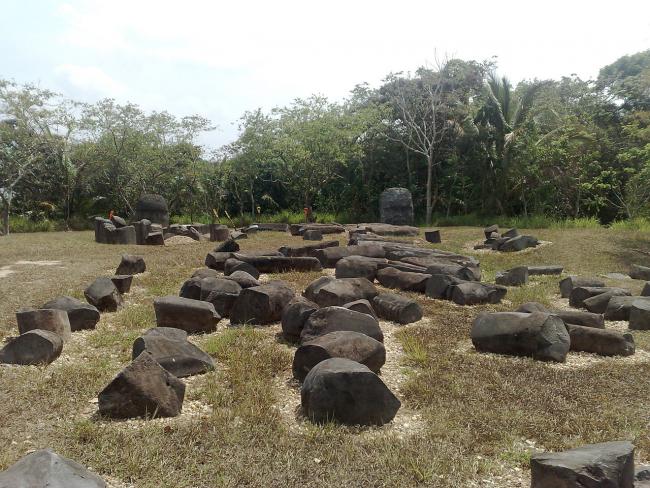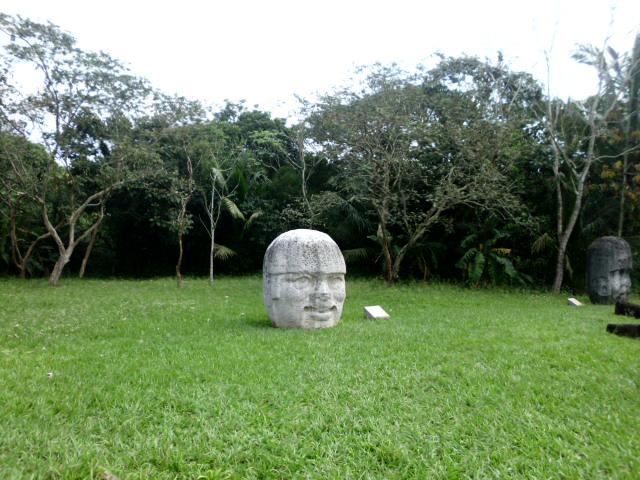
Complejo A
Estructura
This is the ceremonial precinct of this ancient city. It was originally composed of nine structures arranged symmetrically around two courtyards. The north courtyard was delimited by a wall made of basalt columns. This sector of the ancient city was damaged between 1958 and 1984, which is why little can be seen today.
Within this architectural complex, around 50 offerings were found, composed of ceramic vessels and figurines; jade objects (ear flares, necklaces, votive chisels and figurines, among others), as well as other artifacts, such as hematite mirrors. Five massive offerings containing tons of serpentine stone were also found. In addition, a dozen stone sculptures carved in the Olmec style were found. The jade was imported from Guatemala, while the serpentine came from Oaxaca and the stone for the sculptures originated from the region of Los Tuxtlas, in Veracruz. This is proof that the inhabitants of La Venta participated in an extensive trade network.
Colossal Heads: Monuments 2, 3 and 4 (colossal heads) were found to the north of Complex A oriented to the north. These works, made in volcanic rocks, such as basalt and andesite, are the representation of male human beings carrying insignia of power. Through the stone sculpture was the testimony of an unequal society in which its leaders elaborated their portraits in this way. The head on the left is monument 4; the one in the center, monument 2, and the one on the right, number 3.
Monument 2: The axes that project his face evoke a motif of recurring iconography between the Early Preclassic and early Middle Preclassic periods (900-400 B.C.), where a change in aesthetic appreciation is denoted and the norm in the perspective of sculpture in bulk is modified.




